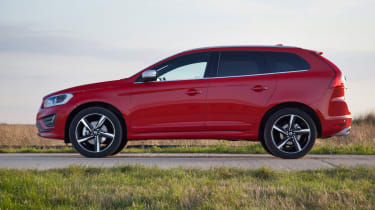Volvo XC60 SUV (2008-2017) - Engines, drive & performance
Safe and solid, but the Volvo XC60 is uninspiring on country roads
The Volvo XC60 is calm and composed in corners, with plenty of grip and minimal body lean, but it's not as much fun to drive as the BMW X3. A big downside is the steering. It feels reassuringly heavy, but it's also artificial – giving little feedback to warn you when the car is losing grip. The problem is worse in the front-wheel-drive versions, which quickly lose grip if you accelerate mid-corner.
R-Design models come with larger 18-inch alloy wheels, which look cool but also highlight bumps and imperfections in the road that would go unnoticed in smaller-wheeled models.
Forget about driving the XC60 like it's a sports car and you'll get on a lot better. Volvo has a talent for building cars that are quiet and stable on the motorway and the XC60 follows this brief. Its raised driving position not only gives you a better view of the road ahead, but also makes you feel safer.
Volvo XC60 diesel engines
We'd recommend the 2.0-litre D4 diesel. It's frugal, yet can also get the car from 0-62mph in just 8.1 seconds – plus it's smooth and quiet. If you need four-wheel drive (for more grip on slippery roads or if you intend to use the car for towing), then the 2.4-litre D4 is the best option. The extra weight of the four-wheel-drive system, along with the power used to turn the rear wheels, means it's more than a second slower from 0-62mph than the 2.0-litre model.
Fitted with four-wheel drive, the Volvo XC60 can tackle rough and muddy tracks, but attempting anything more taxing could leave you stranded.
Petrol engines
There's also a 2.0-litre petrol engine called the T5, which is turbocharged, produces 242bhp and can do 0-62mph in 7.2 seconds.










